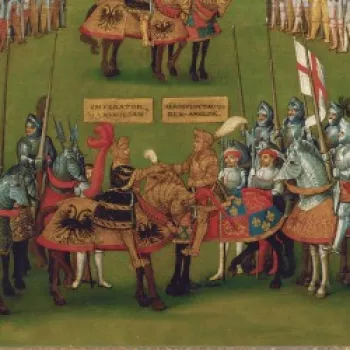Four of a set of five saddle-steels of Henry VIII about 1545
RCIN 67652

Agostino dei Musi (c. 1490-after 1536)
Four of a set of five saddle-steels of Henry VIII about 1545
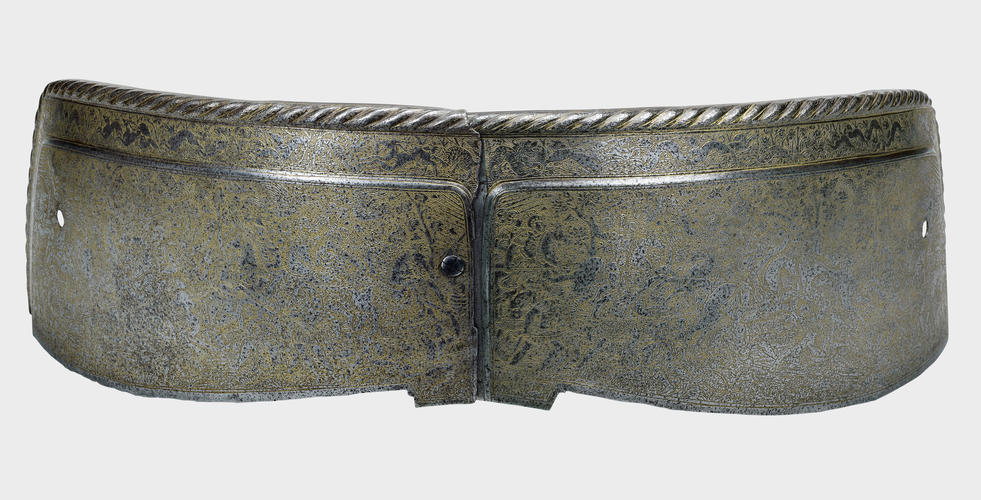
Agostino dei Musi (c. 1490-after 1536)
Four of a set of five saddle-steels of Henry VIII about 1545
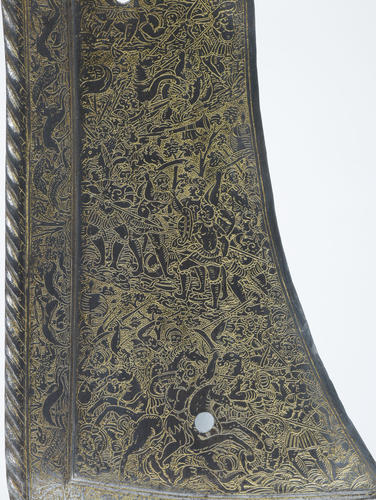
Agostino dei Musi (c. 1490-after 1536)
Four of a set of five saddle-steels of Henry VIII about 1545
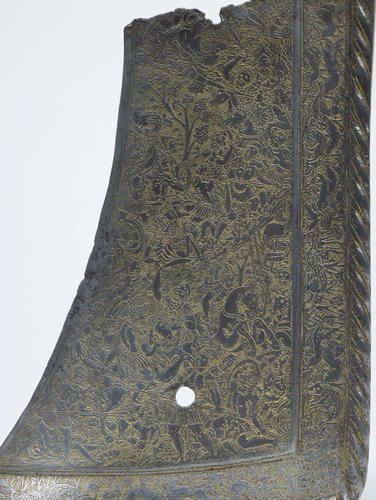
Agostino dei Musi (c. 1490-after 1536)
Four of a set of five saddle-steels of Henry VIII about 1545
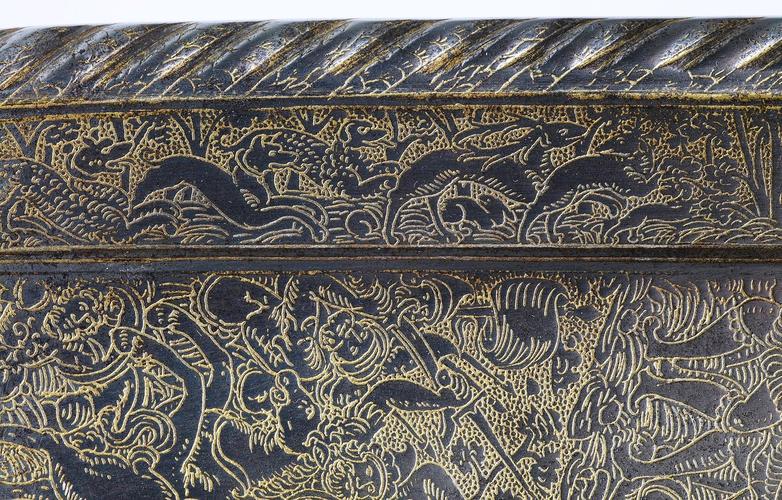
Agostino dei Musi (c. 1490-after 1536)
Four of a set of five saddle-steels of Henry VIII about 1545
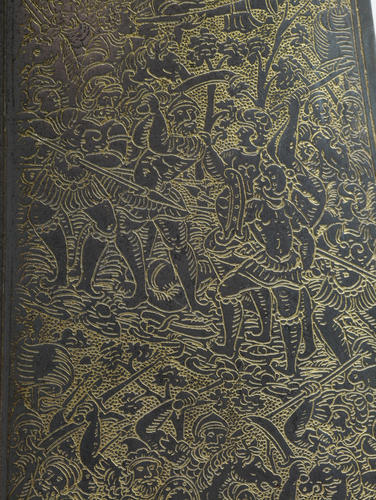
Agostino dei Musi (c. 1490-after 1536)
Four of a set of five saddle-steels of Henry VIII about 1545







-
Four of a set of five saddle steels consisting of two plates for the rear arson and two side plates for a symmetrical fore arson, the central plate of which is now missing. The upper and lateral edges of each plate are formed with boldly roped partial turns. The turn is accompanied to the inside by a broad recessed border. Each of the fore plates is pierced with two holes for the bolts that originally secured them to the tree or frame of the saddle. The inner edge of the left plate is partly broken away. The left rear plate originally had a flange, no doubt decorated, which overlapped the plain flange at the left edge of the right plate, but this has been cut away. Both rear plates were at one time pierced with two holes to accommodate the three bolts that retained them, the central one of which would have passed through the inner hole of each plate.
All of the plates are etched in relief and were originally fire-gilt overall. The crests of the roping are etched in line with overlapping leaves, rounded and pointed on alternate crests. The recessed border is etched in relief against a densely dotted ground with hounds chasing game (deer, hares and wild boar) through a lightly wooded countryside. The main areas are similarly etched all over with battle-scenes involving cavalry and infantry either in classical armour or in quasi-Eastern dress, all in a wooded landscape. The same figures keep repeating, sometimes reversed and with minor alterations of equipment.
The source of many of the figures is an engraving by Marco da Ravenna, possibly after Guilio Romano (c.1499-1546) or from a repetition of it by Agostino Veneziano (c.1490-after 1536). Others also come from an engraving by Marco da Ravenna, possibly after either Raphael or Guilio Romano. The same figures are repeated several times with slight differences of dress and arming.
Measurements: Right fore plate: height 23.5 cm, width 32.4 cm; Left fore plate: height 23.5 cm, width 26.4 cm; Right rear plate: height 17.9 cm, width 39.9 cm; Left rear plate: height 17.7 cm, width 40 cm.
Weight: Right fore plate: 0.395 kg; Left fore plate: 0.380 kg; Right rear plate: 0.539 kg; Left rear plate: 0.510 kg.
Tests undertaken by Dr Alan R. Williams on the right fore plate and the left rear plate of the saddle show them to have microhardnesses in the ranges 234–283 VPH (average 265 VPH) and 212–230 VPH (average 225 VPH) respectively. The fore plate is formed of finely grained iron, small areas of carburised iron (pearlite) in varying proportions, and some slag-inclusions. It is an air-cooled steel with a carbon content of perhaps 0.4–0.5%. The rear plate is formed of a network of iron grains, large areas of coarsely grained carburised iron (pearlite) having its lamellae broken down into globules, and some slag-inclusions. It is an air-cooled steel with a carbon content of perhaps 0.3–0.4%, and has undergone a good deal of hot working.
Text adapted from Arms and Armour in the Collection of Her Majesty The Queen: European Armour, London, 2016Provenance
An inventory of 1555 listing the armour of the late King Henry VIII in the Green Gallery at Greenwich includes ‘The fforepart and inderp[ar]te of a guilte Saddle graven and guilte’. The notable width of these saddle-steels would be consistent with their having belonged to Henry VIII in his later years.
It is possible that the fore plates were the ‘Saddle Bow, imperfect, highly Engraved in 2 Pieces’ supplied from the Tower Armouries for the refurbishment of Windsor Castle in 1831. The rear plates are recorded in the Tower Armouries and were transferred to Windsor Castle in 1914, where they became item no. 1870 in the North Corridor Inventory. The fore arson plates are also recorded in that inventory as items no. 1868 and 1869. -
Creator(s)
-
Medium and techniques
Category




